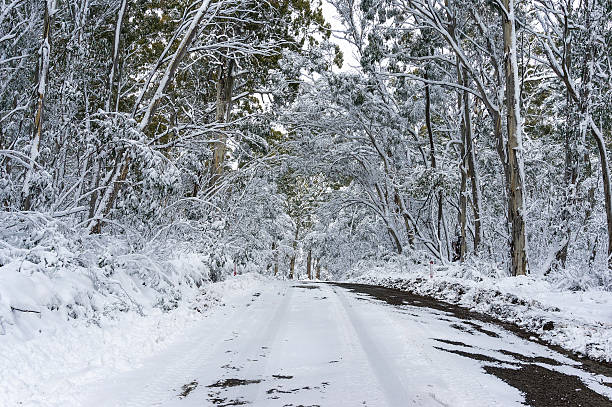Learn About the Highlands That Are Famous for Reliable Snowfall
Learn About the Highlands That Are Famous for Reliable Snowfall
Blog Article
Discover the Interesting Results of Snow in Australia on Regional Environments
In spite of its online reputation for sun-soaked landscapes, Australia additionally boasts areas buried by snow-- a phenomenon that greatly affects the nation's special ecological communities. The shielding residential properties of snows protect vegetation and fauna amidst the coldest winter seasons, while the melting snow supports rivers and marine life. The real wonder lies in just how these icy problems shape the country's biodiversity and nutrient cycles. As we unwind this elaborate connection, we locate ourselves treading on uncharted premises in Australia's high nation.
The Unexpected Regions of Snowfall in Australia
Although Australia is commonly linked with sandy beaches and sun-scorched landscapes, certain regions remarkably experience snowfall. The high nation regions of New South Wales, Victoria, and Tasmania are particularly recognized for their wintertime snow. The Snowy Hills in NSW, for example, get bountiful seasonal snow, using a stark contrast to the nation's typical warm, dry environment. On the other hand, the Victorian Alps and components of Tasmania also see yearly snowfalls, transforming the landscape into a winter season paradise. These locations are not simply anomalies yet indispensable components of Australia's varied climate system. The existence of snow in these regions dramatically affects neighborhood communities, subsequently impacting the nation's unique biodiversity. Nevertheless, the certain effect on Australia's distinct plants will be reviewed in the following area.

Just How Snow Impacts Australia's Special Flora
While it might appear uncommon, snowfall in Australia plays a critical role fit the country's one-of-a-kind flora. The snow-filled winters foster resilience in Australian plant species. This is particularly obvious in the towering and sub-alpine areas, where snow gums and mountain plum-pines prosper. These plants have actually developed to survive in severe conditions, with snow offering as a safety covering from extreme winds and freezing temperatures. The snow likewise contributes to the moisture content of the soil, offering needed hydration for plant during the completely dry summer months. Essentially, the snow influences the timing of blooming and seed dispersal, the growth rates, and the survival of many plant species, showcasing the detailed interplay in between climate and plants in Australia.

The Adjustments of Australian Fauna to Snowfall
Just as Australia's flora has actually adjusted to the wintery problems, the local fauna as well, display impressive adjustments to the snowfall. It utilizes the snow as insulation, hibernating in rock crevices beneath the snow to stay warm. The Snow Skink, a types of lizard, transforms its colour to white during winter season, giving camouflage read review against predators.
The Duty of Snow in Forming Neighborhood Ecosystems
In shaping the regional ecosystems, the function of snow in Australia is both multilayered and profound. It influences the distribution of plants and animals, greatly defining the biodiversity of sub-alpine and alpine areas. Snow offers a crucial water resource, feeding rivers and tanks as it thaws, therefore supporting a variety of aquatic life forms. Additionally, snow functions as an insulator, protecting ground-dwelling microorganisms from extreme cold. In a similar way, it plays a substantial role in soil formation and nutrient cycling. The routine freezing and thawing of soil induced by snowfall fosters the failure of rocks, boosting soil fertility. Consequently, the visibility of snow forms the greenery patterns, animal actions, and total sustainability of Australia's distinct environments. Does Australia Get Snow.

The Future of Snowfall in Australia: Effects and predictions

Provided the critical role snow plays check in forming local communities, the future of snowfall in Australia is drawing increasing attention from ecologists and researchers. Current climate designs anticipate a considerable decrease in snowfall read this post here as a result of international warming, with possibly profound influence on neighborhood communities. Much less snow could cause lowered water availability in alpine areas, adversely affecting wildlife environments and plant life. Additionally, it could change the timing of seasonal adjustments, interrupting the life cycles of several native species. The tourism sector, heavily dependent on the wintertime snow period, may also face considerable obstacles. Comprehending these predictions and their implications is critical to develop efficient conservation techniques, making certain the conservation of Australia's distinct biodiversity and the sustainability of its economic climate.
Final Thought
The function of snow in Australia's communities is critical yet typically overlooked. Therefore, the snow in Australia is a lot more than an all-natural spectacle; it's an important gamer in the nation's environmental story.
Despite its credibility for sun-soaked landscapes, Australia likewise boasts areas buried by snow-- a phenomenon that greatly affects the country's unique ecological communities. It uses the snow as insulation, hibernating in rock crevices below the snow to remain warm - Snow In Australia.In forming the local communities, the function of snow in Australia is both extensive and multilayered. The visibility of snow forms the greenery patterns, pet habits, and general sustainability of Australia's one-of-a-kind communities
Offered the essential function snow plays in shaping regional environments, the future of snowfall in Australia is attracting raising interest from environmentalists and scientists.
Report this page